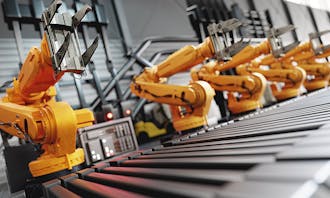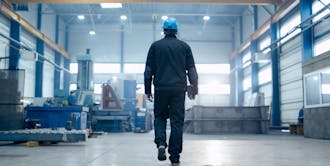- Home >
- Interviews >
-
Dr Jun Pei
Dr Jun Pei - Cepton
2020-07-22
4 min read

Q. Can you give me an overview of the company and how it was founded?
Cepton was founded in 2016 by Dr Mark McCord and myself. Over time, we built a leadership team of tech industry veterans with over two decades of collective experience across a wide range of advanced lidar (light detection and ranging) and imaging technologies. Cepton focuses on the mass market commercialisation of high performance, high-quality lidar solutions based on our unique, patented MMT® (Micro Motion Technology) architecture.
In 2016, when autonomous vehicles started to gain momentum, we identified big opportunities in the lidar market, since it was clear that lidar technology was becoming a key enabler of advanced, accurate 3D perception. Cepton was founded as one of the earliest companies in the automotive lidar space.
Mark and I recognised some key challenges of the rotating lidars that were then prevalent in the market. More specifically, the rotational architecture posed limitations to some aspects of the performance, durability and embeddability of those systems.
We therefore decided to bring to market a front-facing lidar with a scalable architecture, which led to the invention of MMT, a rotation-free, mirrorless and frictionless architecture enabling Cepton lidars to deliver high resolution, long range 3D-sensing while being highly compact, durable and manufacturable with easily accessible components.
Today, Cepton has a global customer base. We are headquartered in San Jose, USA, with a growing presence across the world, including in Germany, Canada, the UK and Japan.
Q. What are the company’s main products or services?
Cepton aims to unleash lidar’s potential by transforming dumb sensors into smart, AI-ready sense organs for the vehicles, cities and buildings of the future.
Using infrared light pulses to create 3D representations of objects and their surroundings, lidar provides accurate, real-time 3D data on distances to objects, their dimensions, speed and reflectivity. With this information, the perception software can accurately identify and classify all types of objects around us, while maintaining anonymity.
Lidars don’t need a light source, so they function very well in complete darkness and other conditions that are difficult for cameras. Lidar also provides good resolution and distance accuracy, building a more accurate and detailed 3D picture of the world around us compared to other perception technologies such as radar.
Cepton provides intelligent lidar-based solutions for a range of markets such as autonomous driving, advanced driver-assistance systems (ADAS), intelligent transportation systems (ITS), smart spaces (e.g. crowd analytics, security) and industrial robotics.
”
Cepton aims to unleash lidar’s potential by transforming dumb sensors into smart, AI-ready sense organs for the vehicles, cities and buildings of the future.
”
Q. What is the greatest challenge that the company overcame?
The greatest challenge we overcame was how to build the right team of talented people. The company started off with a small group of close friends, and we devoted all of our time to inventing technology and developing products. We did not raise our profile in public. This meant that recruitment in the early stages primarily came through referrals.
Building our profile was key to overcoming this hurdle. As Cepton engaged in more and more conversations with customers and partners worldwide, our reputation started to grow in the lidar circle.
Many experienced lidar professionals became interested in learning more about the company as a result. Fascinated by our unique approach to lidar, increasing numbers of very talented individuals proactively sought to join us — often from our key competitors. This has been incredibly important for the company, and we now have a group of talented people who are all working towards the same goal.
Q. How does the product tie into the growing use of automation?
Cepton’s technology is a crucial element in automation, most notably in autonomous mobility, intelligent transportation systems (ITS) and smart spaces, where intelligent perception is essential in helping interpret different environments and provide analytical solutions.
In a manufacturing setting, our Helius Smart Lidar System can be used to enable access control, or to monitor surroundings to enhance worker safety. The system can define zones and flag intrusions to protect people from entering dangerous areas. It also helps manage the movement of autonomous ground vehicles and workers to avoid collisions.
When used in a vehicle, Cepton lidars effectively act as its eyes. Accurately detecting surrounding objects and precisely locating other vehicles is essential to chart safe navigation paths for assisted driving and driverless situations. This is why autonomous, or partly autonomous, vehicles rely on lidar to create high-resolution 3D maps of their surroundings. The same perception capabilities can also enable autonomous machinery to navigate safely in facilities, a key enabler of industry automation.
Our lidars are used as part of intelligent traffic infrastructure to support road, rail and pedestrian safety. Here, lidar-based perception systems provide accurate vehicle and pedestrian data to minimise accidents and optimise traffic flows city-wide, enabling smart cities. They can also be used to scan vehicles passing at high speeds for intelligent e-tolling. In the rail sector, lidars help trains perceive obstacles, avoid collisions, keep platforms safe and reduce accidents at rail crossings.
They are also used in the smart spaces sector, because its anonymised perception capabilities make it ideal for privacy-sensitive crowd monitoring and analytics. In a data-protection sensitive world, this is a key benefit for public transit systems, city planners, businesses and organisations that rely on crowd data to avoid overcrowding, improve infrastructure, and secure critical infrastructure from intrusions.
To use the COVID-19 pandemic situation as an example, Helius can enable better social distancing by monitoring spaces where people are likely to gather, providing live capacity data, looking for overcrowding and alerting the necessary authorities without impinging on people’s privacy. This system can also highlight opportunities for mitigation — for example, showing another route or space with fewer people.
Sign up for updates.
Try these
You might also like

Interview
John Young - EU Automation
Implementing an automation system without first thoroughly planning your approach can be a very risk...

Interview
Neil Ballinger - EU Automation
Have a plan to manage the risks. Planning ahead rather than reacting to failures gives you a competi...

Interview
Jon Brewin - AutoStore
AutoStore is the cube storage pioneer, inventing the technology and using the last few decades to pu...



